Beverly Gray's Blog: Beverly in Movieland, page 127
October 4, 2013
Wilda, Queen of the Jungle
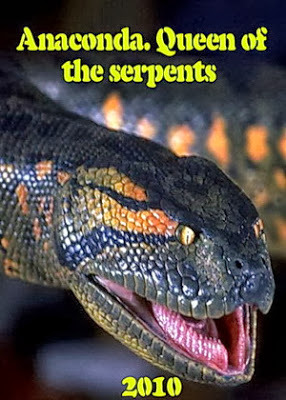
When I was a kid, there was a television series starring Irish McCalla. It had a great title -- Sheena: Queen of the Jungle. I doubt I ever actually watched it, and I’m sure I didn’t see the later film and TV versions. No matter, though, because I know someone who is a queen of the jungle for real.
Wilda Rokos met me for lunch, wearing a purple T-shirt embossed with a glittery pattern and a pair of crisp white slacks. She sported a gold necklace, bracelets, earrings, and an emphatic diamond ring. Her nails were lacquered pink, her makeup was impeccable, and her blonde hair was in perfect array. In other words, she was the very model of a modern SoCal matron. In fact, Wilda grew up in tony Brentwood, California, with Gregory Peck as a neighbor, Jimmy Stewart as the father of two classmates, and tap-dancer Eleanor Powell as her Sunday School teacher. Her dad, an insurance agent whose clients included the owners of such swank local eateries as Chasin’s and Scandia, socialized in off-hours with “below the line” Hollywood types like the Westmore family of makeup artists.
Wilda’s mother was an actress and singer long employed by MGM, dubbing in singing voices for stars who were less musically talented. Because she discouraged her daughter from entering the entertainment field, Wilda enrolled in USC to study literature and art. Newly out of college, she spent six years or so working for the ferocious actors’ agent Sue Mengers at ICM. As Mengers’ assistant and “doormat,” she read scripts, negotiated deals, and kept stars like Gene Hackman out of trouble. Finally she decided, “I didn’t want to be a handmaiden any longer.” Eventually, she joined forces with her Oscar-winning husband, Jim Rokos (“The Resurrection of Bronco Billy”), to launch a programming sales company, selling high-caliber shorts for TV airings. That’s how she came to the attention of the Discovery Channel. She’d always loved animals. The channel had acquired some crude nature footage, showing animal life in Latvia, Estonia, and Ukraine. Wilda rescripted the documentary and supervised the editing: the result was a 4-part special called Balance of Nature.
Soon Discovery was proposing a “Most Dangerous Animal” series. It funded her trip to Venezuela and Brazil to investigate piranha habitats. During a return visit to South America, she was photographing deadly snakes up close and personal. The result was Anaconda: Queen of Serpents, a National Geographic wildlife documentary focusing on the scientific research of herpetologist Jésus Rivas. Wilda made money by retaining foreign rights. In the process, “I became queen of the snakes. Do I like snakes? No!” Still, she appreciates the role they play in nature. Fortunately, she’s not the squeamish type. She can fearlessly handle less venomous snakes, and gamely hold an anaconda by the tail to keep it in a shot.
Her stays south of the border taught her that applying mascara in the jungle is an exercise in futility. She also learned that “animals are safer than people.” Once, when she’d chewed out a local member of her crew, he threatened to kill her. Forewarned, she slept that night with two camera assistants, one on either side of her, and an open knife in her hand. Today she worries about the fate of such indigenous creatures as the caiman and the capybara if Venezuela follows through on Hugo Chávez’s radical plan to turn private cattle ranches into rice paddies. Ideally, “I get to show nature in a very beautiful way.” But because of Venezuelan political upheaval, “I have no idea what’s happened to those animals.”
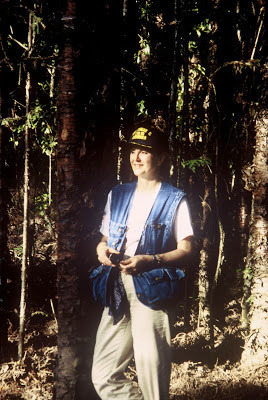 Wilda in Irian Jaya, Indonesia
Wilda in Irian Jaya, Indonesia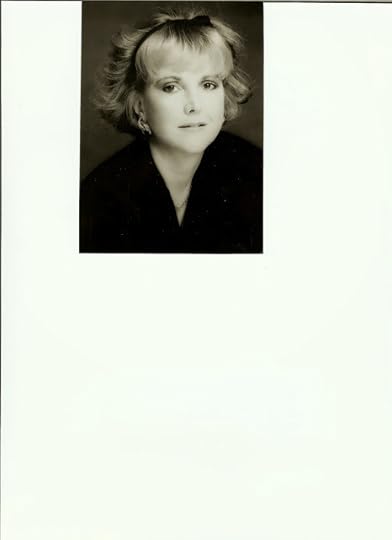
Published on October 04, 2013 10:50
October 1, 2013
The West Hollywood Connection: How I Kibbitzed with William Friedkin
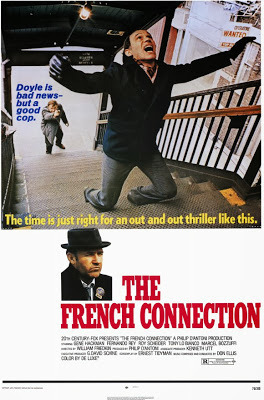
You never know who you’ll bump into at the West Hollywood Book Fair. It all started in the green room, where speakers hang out, enjoying the free food. My panelist Dwayne Epstein, author of Lee Marvin: Point Blank, was chatting with a friendly gentleman, and I asked to be introduced. That’s how I found myself trading opinions with William Friedkin, who shot to fame with such landmark Seventies films as The French Connection and The Exorcist.
Friedkin, author of a brand-new memoir (The Friedkin Connection, natch!), was in a reflective mood. I asked whether he’d crossed paths, early in his career, with Roger Corman, and discovered he was the rare director of that era who did not start out with the King of the Bs. When I remarked on the challenges I had faced in writing a biography of my old boss, he was not overly sympathetic. Most people who hear that Roger demanded of me the right to read my book in manuscript and remove anything he considered “derogatory” are flabbergasted by the man's chutzpah. Friedkin, though, pointed out that most Hollywood figures would be equally demanding. His own wife, former studio chief Sherry Lansing, sought to impose similar conditions on a biography now being written by a talented and sympathetic journalist. But Friedkin prides himself on never reading the various books (like Peter Biskind’s bestselling Easy Writers and Raging Bulls) that touch on his own checkered career.
Friedkin clearly has no great regard for the Corman brand of low-rent filmmaking. But he admires Roger for never laying claim to being an artist. In fact, Friedkin is reluctant to tout himself or any other Hollywood filmmaker as anything more than an entertainer. Art, he feels, is what happens when someone stares at a blank page or a blank canvas (or today a blank computer screen) and then produces something of value. He regards movies as much too collaborative to really bear the stamp of an individual artist, unless we’re talking about a filmmaker on the level of Bergman, Fellini, or Kurosawa. (Hey, Roger Corman distributed masterworks by all three! But I digress.)
My Hollywood Biography panel was less about artists than about the intricate dance between stars and their fans. Michael Stern, whose I Had a Ball is a memoir of his friendship with the immortal Lucy, described how Lucille Ball cherished her fan base, consistently remaining gracious about photos and autographs. Both Dwayne Epstein and B. James Gladstone (The Man Who Seduced Hollywood) waxed eloquent about star power. We learned from Gladstone that legendary Hollywood lawyer Greg Bautzer parlayed his good looks, athletic skills, splendid wardrobe, and suave moves on the dance floor into a life studded with celebrity romance. (Among the glamour girls he squired were Lana Turner, Joan Crawford, and Ava Gardner.) Lee Marvin, too, was known for his sex appeal. But Epstein insists Marvin pooh-poohed his own attractiveness, comparing himself unfavorably to a real star like Clark Gable, whose mere presence in a studio hallway could cause women to faint dead away. Ageless Milt Larsen paid tribute to the incomparable Cary Grant, who once took it on himself to personally welcome visitors into the famous magicians’ club known as the Magic Castle. The guests were dazzled, wondering how Larsen, the Castle’s founder, had managed to conjure up that particular illusion.
Personally I’m paying tribute to the booksellers who helped make the fair possible. Kudos to Book Soup, which hosted Friedkin, Sally Kellerman, and other celebs, and also to Traveler’s Bookcase, where fans of my panel could buy books and make their authors feel like stars.
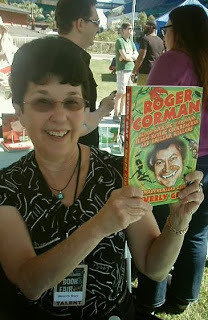 Beverly at the West Hollywood Book Fair (with thanks to Barbara Troeller)
Beverly at the West Hollywood Book Fair (with thanks to Barbara Troeller)
Published on October 01, 2013 12:26
September 27, 2013
Stanley Kramer and Lee Marvin Set Sail on a Ship of Fools
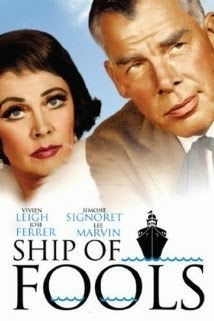
Back in the dark days of 1941, Katherine Anne Porter began a novel that was intended as an allegory of the Nazi rise to power. Ship of Fools was set entirely on an ocean liner sailing from Veracruz, Mexico to Bremerhaven, Germany in 1933. Passengers of many nationalities were thrown together on a voyage that revealed the darkness inside each of them.
When Porter’s novel was published in 1962, it became a sensation worldwide. In 1965, Stanley Kramer launched a major film version, starring such international luminaries as Oskar Werner (as a doomed German doctor), Simone Signoret (as a drug-addicted Spanish aristocrat who faces jail for siding with the peasantry), dancer José Greco (in a rare acting role as the unscrupulous leader of a flamenco troupe), and José Ferrer (who’d made a delightful Cyrano de Bergerac for Kramer, but was cast this time as an odious proto-Nazi). Kramer’s Ship of Fools also featured young George Segal and Elizabeth Ashley as mismatched lovers, along with Michael Dunn as a sardonic dwarf who functioned as the film’s Greek chorus (“You may even find yourself on board.”) The film won two Oscars, and was nominated for six more, including Best Picture. It was a prime example of an endangered Hollywood species: a film with a strong social consciousness
I just saw Ship of Fools on the big screen as part of the Stanley Kramer Centennial series, now at the Billy Wilder Theater through September 29. Before the screening began, Karen Sharpe Kramer reminisced about how, as an ingénue shooting a Jerry Lewis film on the Paramount lot, she had slipped into the soundstage where the big ship had been built, determined to see some famous actors at work. Her brief encounter with director Kramer set off a chain of events that led to their marriage nine months later.
Another guest on the Wilder stage was BarBara Luna, who had played a tempestuous member of Greco’s dance troupe. One of Luna’s most vivid memories was of co-star Lee Marvin chasing her around the set, even getting his foot caught in a fire-bucket in the process. She also spoke about the famous scene in which Marvin (as a washed-up baseball player) drunkenly invades the cabin of socialite Vivien Leigh, who wards off his advances by hammering him with her evening slipper. In Luna’s vivid telling, one of Leigh’s blows shattered Marvin’s nose.
Dwayne Epstein is having none of that. Epstein’s biography, Lee Marvin: Point Blank, is newly in print. But Epstein worked on this labor-of-love for two decades, and so was able to interview Hollywood movers and shakers who are now, alas, long gone. Back in 1994 he discussed the Marvin-Leigh scene with Stanley Kramer, who decried the fact that that the old rumor was still afloat. (Marvin’s broken beak actually stemmed from an encounter with Martin Milner on the TV series, Route 66.) As Epstein discovered, Marvin held onto the shoe with which Leigh had assailed him as a cherished memento.
There are many more stories to be told about marvelous Lee Marvin. Visitors to this Sunday’s West Hollywood Book Fair will hear some of them, because Dwayne Epstein is one of the speakers on a Hollywood Biography panel I’ll be moderating. Another participant is B. James Gladstone, a show biz attorney who wrote The Man Who Seduced Hollywood: The Life and Loves of Greg Bautzer, Tinseltown’s Most Powerful Lawyer. The immortal Milt Larsen will also be on hand to talk about My Magical Journey, and my fourth panelist is Michael Z. Stern, whose memoir details his unlikely friendship with Lucille Ball. Y’all come!
To purchase $10 tickets to any of the remaining screenings for the Stanley Kramer centennial celebration at UCLA's Billy Wilder Theater, click here.
Published on September 27, 2013 17:40
September 24, 2013
A Bouquet of Apostrophes for National Punctuation Day
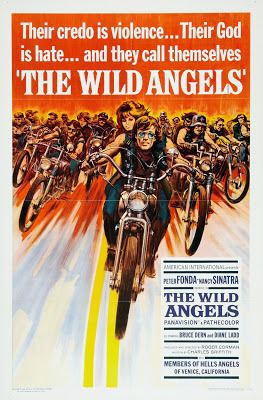
If you’re reading this on September 24, be forewarned that (thanks to the tireless efforts of founder Jeff Rubin) it’s National Punctuation Day. You just barely have time to dash out and buy your sweetheart a nosegay of commas or one perfect semicolon.
I jest, of course, though correct punctuation is no laughing matter. This holds true even in the movie industry, where linguistic correctness is low on the scale of priorities. My former boss, Roger Corman, scored big in the Sixties with a movie about the Hells Angels, who as social outlaws have never bothered using an apostrophe to indicate the possessive. Maybe that’s why my writing students -- iconoclasts all – drive me crazy with their cavalier approach to punctuation.
Here are some actual examples culled from the scripts I read last spring for the advanced rewrite course I offered through UCLA Extension’s Writers’ Program. I’ve changed a few proper names to help conceal the authors’ identities. And yes, do notice how the Writers’ Program has totally won my heart by correctly putting its apostrophe after the plural noun. Anyway, here goes:
These recipe’s were taught to me by my mother.
Machine’s flash and churn around her.
Anne nods, let’s go of the dish, turns back to the sink.
Now, lets drink a toast.
I think its best never to argue with a man of the cloth.
The man who ruined both Smith brother’s lives.
I’ll bet your freezing out here in this cold.
Your loud.
He won’t even notice your gone.
You’re little brother came to me.
You’re sure their over twenty one? (Well, at least the “you’re” contraction is correct!)
As a former English major, I’ve got to say, “Aaargh!” I can only suggest that these grammatically-challenged aspiring screenwriters check out the work of Constance Hale. Connie, a fellow member of the American Society of Journalists and Authors, is the go-to person at the New York Times for clever, witty columns about language. She’s written several popular books on the subject, including Wired Style: Principles of English Usage for the Digital Age and Sin and Syntax: How to Craft Wicked Good Prose. Her latest, which I read cover to cover, is Vex, Hex, Smash, and Smooch: Let Verbs Power Your Writing. From her titles, it should be instantly obvious that Connie is not a stuffy schoolmarm type. She herself makes clear that she’s not going to lecture us into submission: “The goal is not hypercorrect grammar, but hyperpowerful prose. It’s not savoir grammaire but savoir faire.” On the other hand, she remains a stickler for strong, forceful, and accurate language: “Let’s say it again: It’s only by caring about precision, nuance, and tone that we write with power.”
Connie’s books are hardly addressed specifically to screenwriters. But some of her suggestions, particularly those relating to the imperative voice, would come in mighty handy for someone trying to write concise, punchy stage directions. This is a woman who can make language sing. Here, in passing, is a sentence I love from her section describing predicates: “But what about those other characters grabbing on to the verbs to become part of the action, or just lurking in doorways, crouching in the shadows, slipping into a sentence at the last minute?” I should add that Connie Hale grew up in the Hawaiian Islands (and is, by the way, an expert on traditional hula). When writing the name of her native state, she always adds an apostrophe: Hawai’i. So she’s earned a place in my punctuation tribute. A verbal hibiscus lei to you, Ms. Hale!
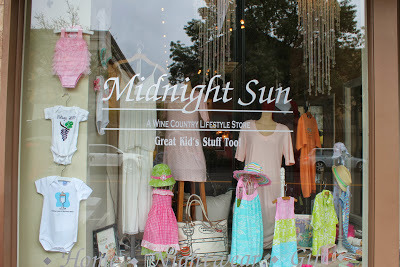 Apostrophe error on storefront window, Healdsburg, California
Apostrophe error on storefront window, Healdsburg, California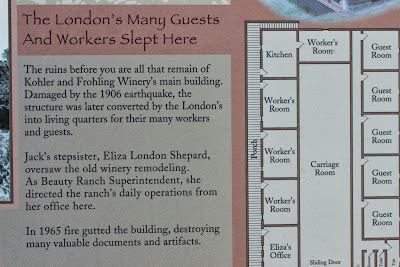 Misplaced apostrophes at Jack London State Historic Park, Glen Ellen, California
Misplaced apostrophes at Jack London State Historic Park, Glen Ellen, California
Published on September 24, 2013 12:06
September 20, 2013
The Zumba Master: Ready for Prime Time?
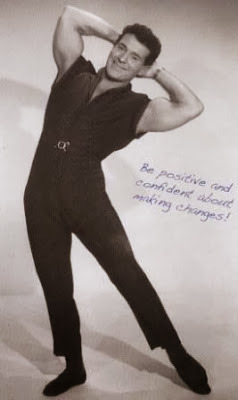
Since the big remodel, there’ve been TV sets scattered throughout the locker room at my health club. And, come to think of it, there are TVs all over the workout area too, including those cute individual sets that keep me amused while I sweat on the treadmill. Seems as though fitness and electronic media go hand in hand.
That’s not a new phenomenon, of course. In fact, there’s a long history of firm-bodied professionals taking to the airwaves to preach the gospel of fitness. Back when I was a kid, my weight-conscious mother would flip on the Jack LaLanne Show, hoping to lose unsightly flab by exercising along with the jumpsuited guru on our living-room Zenith. My sister and I found LaLanne hilarious, and liked to mock his sentimental closing song. If memory serves, it was crooned to the tune of “O Sole Mio” (“It’s time to leave you/ Let’s say goodbye/ These precious moments/ Just seem to fly”). To us LaLanne was insufferably cornball, but he inspired many a restless housewife to at least think about getting in shape.
Needless to say, there’ve been many televised exercise kings (and queens) since. Richard Simmons, for one, has parlayed his zany brand of fitness into game show appearances, talk shows, and commercials, along with frequent TV and movie roles.
But it’s always surprising to go to my gym for an exercise class and meet an instructor who seems to be auditioning for a major Hollywood gig. That’s how I felt when I chanced to attend a “Dance with Me” class led by Billy Blanks Jr. and his actress-wife Sharon Catherine. The two make a charming couple, and lots of gym rats turn out for their high-energy danceathons. And it’s undeniably fun to form a big circle and cheer for classmates who are strutting their stuff. Only later do you realize that – much as you enjoy their sessions – you’ve spent a fair amount of time simply watching other people bring it on. Which is not exactly the point, right?
Today my usual Zumba class had a substitute teacher, Derrick J. Garcia, who was Hollywood all the way. Before starting, this dynamo immediately presented his credentials: he told us he’s the Zumba instructor on TV’s The Biggest Loser, and dances professionally at Richard Simmons events. He then launched into a blisteringly fast set of dance moves, accompanied by almost non-stop patter. Many of his references were show-bizzy: Oprah, Beyoncé, Mr. Miyagi from The Karate Kid (“Wax on, wax off”) Not to mention suggestive, like encouraging us to shake “that junk in the trunk.” Derrick’s moves were often embellished by shimmies, naughty wiggles, and unabashed mugging: he repeatedly crossed his eyes for us, and probably twerked too. In fact, I concluded that Derrick is in line to be the Cal Worthington of fitness. Like Worthington, who’s sadly gone on to that big used-car lot in the sky, he would probably stand on his head to achieve his goal: getting us moving.
If Derrick is Cal Worthington for the exercise set, he cribs a bit of Oprah too. At the end of class we were required to look in the big mirrors and recite affirmations: “I am beautiful . . . strong . . . kind . . . smart.” Fifty sweaty Zumba enthusiasts stumbled out of the workout room in a happy daze, feeling (though surely not looking) like a million bucks.
In the locker room a friendly older lady paused to consider Derrick’s metrosexual appeal. Said she, “There’s men and there’s women. He’s the next generation.” Yes, and definitely ready for his close-up.
Published on September 20, 2013 12:40
September 17, 2013
Searching Out Hard Truths in "The Searchers"
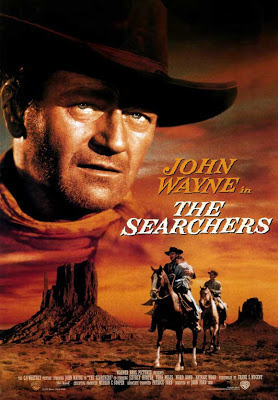
When I first saw The Searchers, I was baffled. I had sought it out because such tastemakers as Steven Spielberg, George Lucas, and Martin Scorsese were proclaiming it one of Hollywood’s greatest films. By the time I watched The Searchers, I had shaken off my parents’ disdain for Westerns. I admired John Ford as a filmmaker, and knew to appreciate the iconic power of John Wayne as a leading man. Still, the filmleft me perplexed. There was, for one thing, its wildly shifting tone: stark tragedy and raucous comedy danced cheek to cheek. The Searchers (1956) also felt somehow shapeless, lacking the tightly controlled forward momentum of Ford’s 1939 prizewinner, Stagecoach. And the John Wayne of Stagecoach – a man of rough-hewn but unmistakable nobility – is not exactly the John Wayne who appears in The Searchers. As a Civil War veteran who dedicates his life to finding the young niece abducted by Comanche marauders, he definitely merits admiration. Yet he’s got a mean streak a mile wide. What was I to make of that?
Unlike me, journalist Glenn Frankel has been a fan of The Searchers since childhood. He grew up to work for the Washington Post, earning a Pulitzer Prize for his coverage of the Middle East. Perhaps his years of observing the Arab-Israeli conflict gave him a special grasp of the tensions between Indians and settlers that lie at the heart of Ford’s film. In any case, he’s earned cheers from movie history buffs with his third book, The Searchers: The Making of an American Legend. Frankel knows everything worth knowing about the conditions under which the film was made. I loved the details about shooting in Monument Valley, a Navajo tribal reserve lacking pretty much everything but gorgeous scenery: no telephones, no public water system, no electrical grid. Most of the actors camped out in a tent city for months on end; food and ice were trucked in from Utah. Ford was happy to improve the lot of local Navajos by hiring them as extras, and used a local shaman to guarantee favorable weather.
What I didn’t expect from Frankel’s book was a foray into Texas history, and an introduction to the girl whose real-life abduction by Indians inspired the movie’s plot. Cynthia Ann Parker was nine years old when she was carried off by a Comanche war band that had massacred her parents. She later married and had three children by her Comanche husband, before being recaptured by Texas Rangers twenty-four years later. Though welcomed back by family members, she never re-adjusted to the white man’s ways and apparently died a tragic figure. Her uncle James’ obsessive search for her forms of the core of John Ford’s movie.
In The Searchers, young Debbie is mostly absent. She’s the McGuffin of the film, the object of the search, without clear-cut desires of her own. As played by the young and lovely Natalie Wood, she’s almost opaque. In contrast, there’s John Wayne’s role as the tough, smart, angry, lonely Uncle Ethan. It’s part of Ford’s aesthetic to strip away most of the explanations behind Ethan’s behavior. But surely Ford is exploring the bold contradictions embedded within the frontier mentality. Says Frankel, “While The Searchers pays homage to the familiar themes of the classic Western, it also undermines them. Its central character possesses all of the manly virtues and dark charisma of the Western hero, yet is tainted by racism and crazed with revenge.” That’s what makes The Searchers so fascinating. It’s about square dances and family breakfasts and a murderous loner who’s still heroic in his own way.
Published on September 17, 2013 12:07
September 13, 2013
A Salute to Cal Worthington, his Dog Spot, and Spokespersons Everywhere
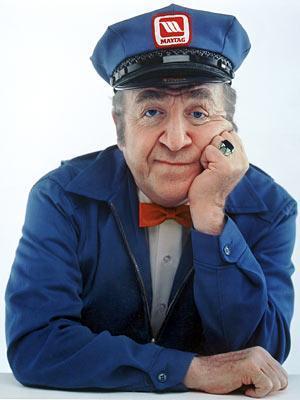
So SoCal icon Cal Worthington has rated an obit in the New York Times. Worthington, who died this week at 92, was known to Southern Californians of a certain age for hawking cars on local TV with the help of a catchy jingle and a lot of wacky stunts. Like, for instance, strapping himself to the wing of a soaring biplane, or acting out his promise to “stand upon my head to beat all deals.” He also enjoyed posing with exotic animals, each of them introduced as “my dog Spot.” In his heyday, Worthington was regarded as a folk hero, a genuine California crazy who frequently guested with Johnny Carson and played himself in several Hollywood films.
When TV sets appeared in our living rooms, Cal Worthington discovered a way to enter our homes and make a buck – or several. But he’s not the only guy who saw profit in the commercial side of television. A long string of Hollywood actors, most of them past their prime on the big screen, have found TV commercials to be a lucrative sideline. One of the first I remember was that iconic tough guy, Edward G. Robinson. Off-camera, he was known to be a connoisseur of the finer things, and I recall a rather elegant commercial that played upon this image. Robinson sat, beautifully lit, in a comfortable chair, while Rachmaninoff’s “Rhapsody on a Theme of Paganini” played in the background. There was a fire in the fireplace, a silver coffee service beside him, and the camera dollied in as he sipped appreciatively whatever brand he was shilling. Later I recall a still-adorable Anna Maria Alberghetti (decades after being the toast of Broadway) mixing a salad in a prop kitchen and earnestly insisting, “Bottled dressing? Not on my fresh salad.” She urged us to buy Good Seasons, a seasoning packet you mixed with oil and vinegar for that just-made touch.
A whole raft of Hollywood character actors found a new lease on life by playing popular characters on commercials. Jane Withers, once a top child star, was Josephine the Plumber on behalf of Comet cleanser. Avuncular Wilfrid Brimley spent decades touting the virtues of Quaker Oats. Comic actor Jesse White, who once voiced a series of humorous ads for Western Airlines, also played the woebegone Maytag repairman, who because of his product’s reliability was fated to be the loneliest guy in town.
Many A-list actors who wouldn’t stoop to being TV hucksters in this country have found huge paydays in faraway places like Japan. This is beautifully captured in Lost in Translation, where Bill Murray’s character is earning $2 million just to say “For relaxing times, make it Suntory time.” Meanwhile, a few lucky nobodies have ridden a popular series of commercials to fame and fortune. I well remember Sandy Duncan as a perky teller for United California Bank, winning our hearts as she grappled with names like Nicholas H. Janopoporopolus. Those commercials got her noticed, and voila! – she had her own TV series. And Barbara Feldon turned heads while lying on a tiger rug and purring about the virtues of a men’s hair pomade called Top Brass. Next thing we knew, she was Maxwell Smart’s Agent 99. Now we have Flo, she of the retro hair and makeup, who has been the weirdly enthusiastic spokeswoman for Progressive Insurance since 2008. She’s played by actress Stephanie Courtney, but will Courtney’s long-term career get a major boost from this role? Maybe we just don’t pay much attention to TV commercials these days. And to me, the GEICO gecko is much cuter.
Published on September 13, 2013 13:44
September 10, 2013
Telephones in Movies: "L.A. Calling"
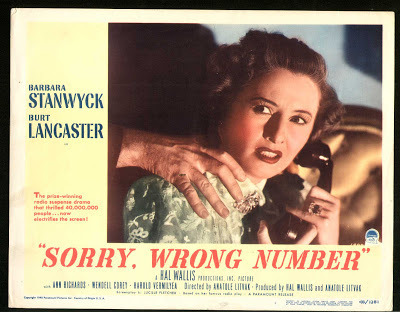
On a gorgeous end-of-summer day, I was lounging on a beach in Corona del Mar, California. I needed to make a telephone call, but suddenly discovered there was no cell phone service in the vicinity. What most of us have come to consider a basic human right – to communicate electronically whenever we choose – was suddenly, shockingly, unavailable. The experience reminded me how much movies have changed with the advent of mobile phones. Way back when, in any kind of thriller, characters were always on the lookout for telephone booths, so they could make an essential call (or change into an appropriate superhero outfit). Today, with cell phones on hand, the canny screenwriter has to think of clever ways in which to disable those handy little gadgets that are so good at keeping us in touch with the world.
I can recall several Hollywood oldies in which a telephone was almost a central character. In 1948, there was Sorry, Wrong Number, based on a melodramatic short play about a bedridden woman who suddenly realizes, after a flurry of mysterious phone calls, that she’s about to be murdered by her husband’s hirelings. The film version, starring an Oscar-nominated Barbara Stanwyck, is far more complicated, but builds to the same kind of startling climax, ending with a lingering shot of that bedside telephone. Much more obscure is a drama I saw at last spring’s Noir Fest, sponsored by the Film Noir Foundation. In Chicago Calling (1952), a down-on-his-luck World War II vet struggles to keep the phone company from repossessing his telephone. Though he badly needs to go out and look for a job, he’s also desperate to be at home with access to a working phone line, because his estranged wife will be calling from Chicago with news of their young daughter’s life-or-death surgery. What a difference a cell phone would make in that scenario.
Not long ago I caught a recent thriller that once again focused on the power of telephones. The Call opens, most effectively, in a Los Angeles 911 call center, where trained operators are always standing by, ready and able to handle any possible crisis. In the leading role is Halle Barry, as a call-center veteran who has been badly rattled by a flub that cost the life of a young girl. Naturally, she gets embroiled in a similar case, when a teenager manages to place a 911 call from inside the trunk of her kidnapper’s car. Pretty soon, Barry has flung aside the rule book and is deeply involved with tracking down the perp, first electronically and then (natch!) in person.
For quite a while I was enjoying the film for its clever manipulation of what we expect about today’s mobile communications. Shouldn’t the police be able to track down the origins of a cell phone call? Well, no – not if the victim has inadvertently switched her own phone with her bad-girl buddy’s untraceable throwaway. And aside from switched phones, there are dropped phones, broken phones, forgotten phones . . . you get the idea. It’s only when Barry gets up-close-and-personal with a creep who abducts young women to satisfy his own outrageous kinks that the movie enters the realm of silliness. Eventually Barry and victim Abigail Breslin (the former Little Miss Sunshine, who spends most of this movie in her underwear) are venting their righteous feminist anger on a white male jerk who’s as unconvincing as he is despicable. Given Breslin’s state of undress and the world of hurt inflicted on various cast members, it’s totally fair to call The Call torture-porn. That ending? I wish they’d just phoned it in.
Published on September 10, 2013 09:17
September 6, 2013
“Where Were YOU in ’62?” -- American Graffiti Revisited
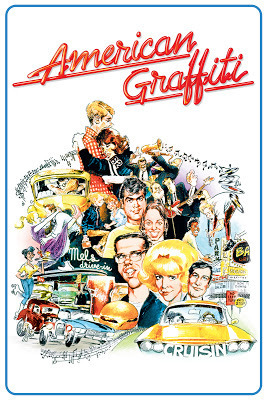 Now that the nation’s universities are welcoming the class of 2017, it’s time to salute a going-off-to-college movie that just celebrated its fortieth anniversary. I’m talking about American Graffiti, George Lucas’s groundbreaking 1973 look at some small-town California teens on a late-summer night in 1962.
Now that the nation’s universities are welcoming the class of 2017, it’s time to salute a going-off-to-college movie that just celebrated its fortieth anniversary. I’m talking about American Graffiti, George Lucas’s groundbreaking 1973 look at some small-town California teens on a late-summer night in 1962.So many legends surround American Graffiti. It was shot in sequence for 29 straight nights so that the actors’ fatigue at the end of the film was genuine. Much of the dialogue was improvised. The soundtrack relied entirely on oldies dear to the hearts of those who remembered where they were in ‘62. And the film catapulted George Lucas into the spotlight, four years before Star Wars made him a Hollywood titan. Moreover, this movie about teens on the brink of adulthood also featured young actors who were on the brink of big careers.
Remember the film’s closing crawl? This was perhaps the first time a movie ended with a few brief lines summing up the fate of the central characters. I remember the audience (including me) gasping as we learned that fearless John would be killed by a drunk driver in 1964, that Terry the Toad was reported missing in action near An Loc in 1965, that nice-guy Steve (who decided not to fly east for college) had become a hometown insurance agent, and that Curt was now a writer in Canada. This terse recitation of the characters’ adult lives truly hit home, because in 1973 so many of us were facing Vietnam, or at least the need to choose between the safe path and the one less traveled.
Most of the film’s actors weren’t household names . . . at least, not yet. In 1973, I doubt we could have predicted their career successes. Some of them never entirely lived up to their early promise. Paul LeMat, who played the hot-rodding John Milner, won a Golden Globe as New Star of the Year for his dynamic Bad Boy role. He’s still around, but mostly in middle-of-the-road television. The same goes for Candy Clark, the film’s one Oscar nominee for her portrayal of dizzy blonde Debbie. Cindy Williams (who played Laurie) will forever be remembered for her amiable 1976-1983 sitcom, Laverne and Shirley. Harrison Ford’s role as a rival racer who goes up against John at the movie’s climax got him little attention. It took Star Wars to make him famous, and Indiana Jones to seal his reputation as an action star. But such films as Witness, The Mosquito Coast, The Fugitive, and the recent 42 (in which he was a superlative Branch Rickey) are testaments to his acting chops.
Richard Dreyfuss (Curt), has had a solid career, progressing from playing brash young men to irritating oldsters (like Dick Cheney in W.) Just four years after American Graffiti he starred in a Neil Simon romantic comedy, The Goodbye Girl. For his lively portrayal of a struggling Off-Broadway actor, he won an Oscar, beating out no less than Richard Burton in Equus. On screen Charlie Martin Smith (Terry the Toad) may have been a doofus, but Smith is now well launched on a serious directing career. While on location for American Graffiti, he often discussed his career goals with another aspiring director, Ron Howard.
Howard, of course, was the one “name” member of the cast, thanks to his Opie role on The Andy Griffith Show. His performance as stay-at-home Steve helped win him a starring role in Happy Days (1974-1984), which circuitously brought him the opportunity to make his directorial debut with Roger Corman’s Grand Theft Auto. But that’s a story for another day.
Published on September 06, 2013 20:50
Beverly in Movieland
I write twice weekly, covering topics relating to movies, moviemaking, and growing up Hollywood-adjacent. I believe that movies can change lives, and I'm always happy to hear from readers who'd like t
I write twice weekly, covering topics relating to movies, moviemaking, and growing up Hollywood-adjacent. I believe that movies can change lives, and I'm always happy to hear from readers who'd like to discuss that point.
...more
- Beverly Gray's profile
- 10 followers



